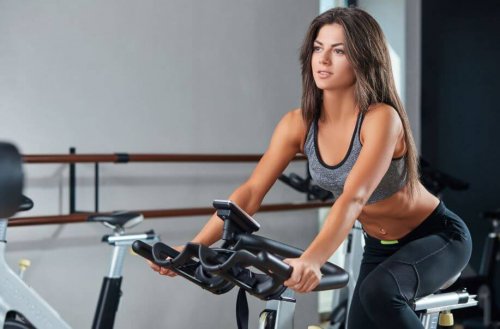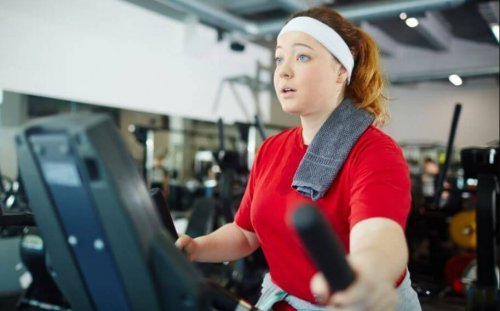Best Cardio Exercises to Lose Weight and Burn Fat

Whether it’s about health or looks, a lot of people want to lose weight and burn fat. Being overweight is an issue which can provoke serious complications. In order to avoid health problems, the answer is to exercise. You can achieve this by using the best cardio exercise machines.
In practice, losing extra pounds isn’t always easy. To achieve this you need to be disciplined and persevere. Alongside using the best cardio exercise machines, you can also reduce your calorie intake. A proper diet will help you to avoid accumulating unwanted fat.
Most of the time, nutrition is not enough: diet and exercise will make losing weight much quicker and effective. Cardiovascular exercises help us to burn fat, allowing the body to lose weight effectively.
Cardio machine exercises
There are different machines for cardio exercises. But which is the best option to lose weight and burn fat? The treadmill, the stationary bicycle or the elliptical trainer are great allies to achieve our goals. All of these may prove to be effective if used properly and constantly.

However, out of all of the cardio machines, the elliptical trainer is probably the best choice. This option has several advantages. The first advantage is that it’s a low impact exercise, reducing impact to a minimum in areas where the body is prone to injury.
Elliptical trainers protect your knees, ankles, and feet much more than other cardio machines. It’s an excellent option for getting into shape.
The second advantage is that the exercise performed on the elliptical trainer is complete since it uses the whole body. It’s similar to doing several different exercises at the same time. This exercise can contribute to maintaining or increasing your strength.
Cardio training according to Lyle McDonald’s protocol
The protocol created by American kinesiologist, Lyle McDonald is a method to burn stubborn fat. The principal in this protocol is that you must begin your workout (with cardio exercises) with shorter intervals of higher intensity.
With this cardio technique, you’ll be able to shift the fat stored in certain, stubborn areas such as the hips or abdomen.
Once this fat has been “freed” into the bloodstream, you must perform a classic cardio workout to burn it. At the end of the session, you’ll repeat short, intense intervals again, to burn all of the sugar stored in your muscles.

This system can be used with any cardio equipment. It’s important to start with moderately high-intensity intervals and adapt them as your body becomes used to them. Otherwise you could exceed your training capacity.
Aerobic exercises without machines
Some people do not feel motivated by exercise machines or become bored using them. In these cases, it’s possible to perform cardio exercises without using machines or any special equipment. Aerobic classes such as aerostat, dancing, and spinning are great options.
It’s advisable to practice these activities under professional supervision to avoid injuries. This will also help you lose weight more effectively. Perseverance is important which is why it’s important to choose an activity you enjoy and one that will keep you motivated.
Advice for cardio workouts
Whatever cardio workout you perform to lose weight, there are certain recommendations that you should keep in mind. Firstly, hydrate constantly during your workout.
Correct hydration will avoid fatigue and any suffering from cramps and spasms. Another element to pay attention to is stretching properly after every cardio session.
Finally, ideally, you should combine cardio training with strength training. This will allow you to build muscles, reduce your body fat and lose weight.
Besides, muscles burn calories even after your training sessions. This is why your body will continue losing fat without any effort.
Whether it’s about health or looks, a lot of people want to lose weight and burn fat. Being overweight is an issue which can provoke serious complications. In order to avoid health problems, the answer is to exercise. You can achieve this by using the best cardio exercise machines.
In practice, losing extra pounds isn’t always easy. To achieve this you need to be disciplined and persevere. Alongside using the best cardio exercise machines, you can also reduce your calorie intake. A proper diet will help you to avoid accumulating unwanted fat.
Most of the time, nutrition is not enough: diet and exercise will make losing weight much quicker and effective. Cardiovascular exercises help us to burn fat, allowing the body to lose weight effectively.
Cardio machine exercises
There are different machines for cardio exercises. But which is the best option to lose weight and burn fat? The treadmill, the stationary bicycle or the elliptical trainer are great allies to achieve our goals. All of these may prove to be effective if used properly and constantly.

However, out of all of the cardio machines, the elliptical trainer is probably the best choice. This option has several advantages. The first advantage is that it’s a low impact exercise, reducing impact to a minimum in areas where the body is prone to injury.
Elliptical trainers protect your knees, ankles, and feet much more than other cardio machines. It’s an excellent option for getting into shape.
The second advantage is that the exercise performed on the elliptical trainer is complete since it uses the whole body. It’s similar to doing several different exercises at the same time. This exercise can contribute to maintaining or increasing your strength.
Cardio training according to Lyle McDonald’s protocol
The protocol created by American kinesiologist, Lyle McDonald is a method to burn stubborn fat. The principal in this protocol is that you must begin your workout (with cardio exercises) with shorter intervals of higher intensity.
With this cardio technique, you’ll be able to shift the fat stored in certain, stubborn areas such as the hips or abdomen.
Once this fat has been “freed” into the bloodstream, you must perform a classic cardio workout to burn it. At the end of the session, you’ll repeat short, intense intervals again, to burn all of the sugar stored in your muscles.

This system can be used with any cardio equipment. It’s important to start with moderately high-intensity intervals and adapt them as your body becomes used to them. Otherwise you could exceed your training capacity.
Aerobic exercises without machines
Some people do not feel motivated by exercise machines or become bored using them. In these cases, it’s possible to perform cardio exercises without using machines or any special equipment. Aerobic classes such as aerostat, dancing, and spinning are great options.
It’s advisable to practice these activities under professional supervision to avoid injuries. This will also help you lose weight more effectively. Perseverance is important which is why it’s important to choose an activity you enjoy and one that will keep you motivated.
Advice for cardio workouts
Whatever cardio workout you perform to lose weight, there are certain recommendations that you should keep in mind. Firstly, hydrate constantly during your workout.
Correct hydration will avoid fatigue and any suffering from cramps and spasms. Another element to pay attention to is stretching properly after every cardio session.
Finally, ideally, you should combine cardio training with strength training. This will allow you to build muscles, reduce your body fat and lose weight.
Besides, muscles burn calories even after your training sessions. This is why your body will continue losing fat without any effort.
All cited sources were thoroughly reviewed by our team to ensure their quality, reliability, currency, and validity. The bibliography of this article was considered reliable and of academic or scientific accuracy.
- Whitehurst, M. (2012). High-Intensity Interval Training. American Journal of Lifestyle Medicine. https://doi.org/10.1177/1559827612450262
- Burgomaster, K. A., Howarth, K. R., Phillips, S. M., Rakobowchuk, M., Macdonald, M. J., Mcgee, S. L., & Gibala, M. J. (2008). Similar metabolic adaptations during exercise after low volume sprint interval and traditional endurance training in humans. Journal of Physiology. https://doi.org/10.1113/jphysiol.2007.142109
- De Salles, B. F., Simão, R., Miranda, F., Da Silva Novaes, J., Lemos, A., & Willardson, J. M. (2009). Rest interval between sets in strength training. Sports Medicine. https://doi.org/10.2165/11315230-000000000-00000
- Gibala, M. J., Little, J. P., Macdonald, M. J., & Hawley, J. A. (2012). Physiological adaptations to low-volume, high-intensity interval training in health and disease. Journal of Physiology. https://doi.org/10.1113/jphysiol.2011.224725
- Wisløff, U., Ellingsen, Ø., & Kemi, O. J. (2009). High-intensity interval training to maximize cardiac benefits of exercise training? Exercise and Sport Sciences Reviews. https://doi.org/10.1097/JES.0b013e3181aa65fc
This text is provided for informational purposes only and does not replace consultation with a professional. If in doubt, consult your specialist.








